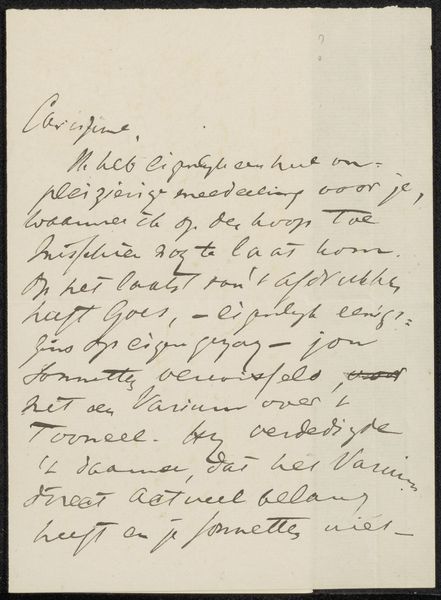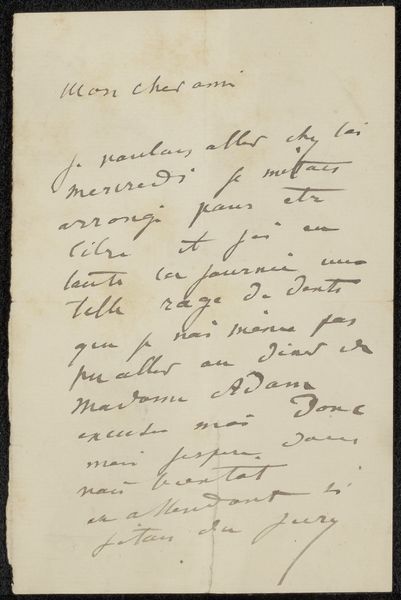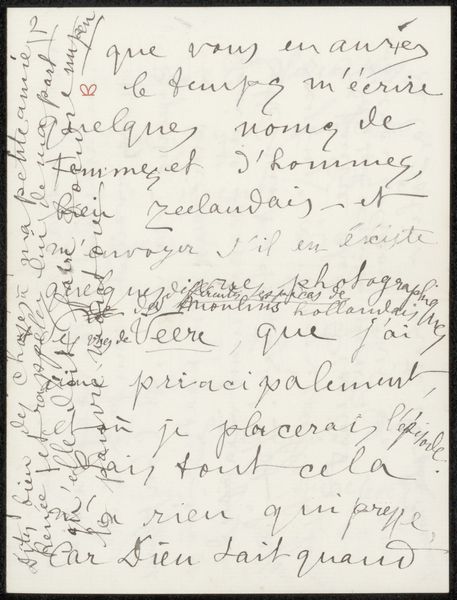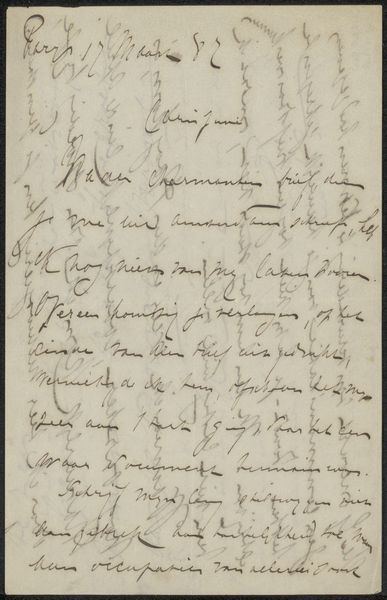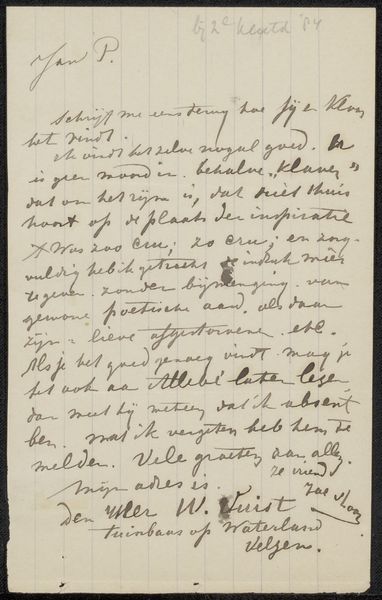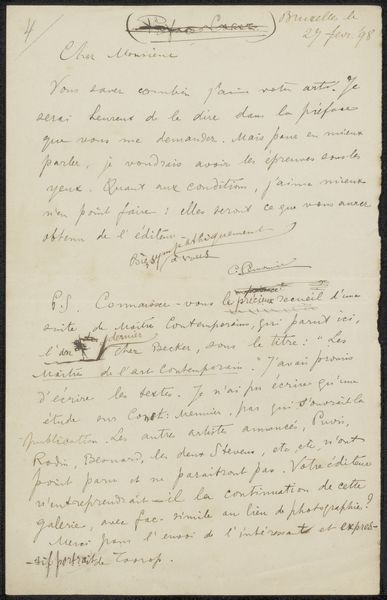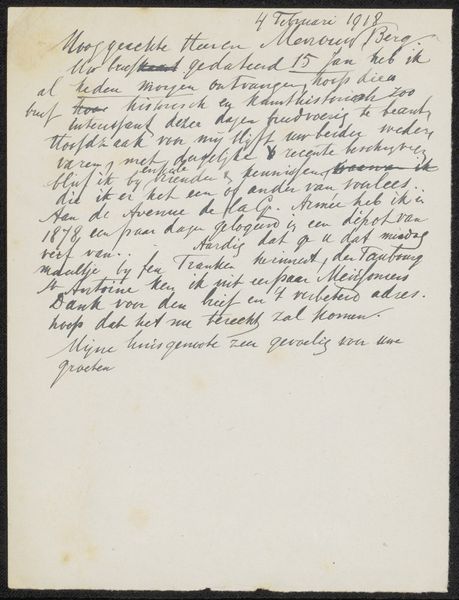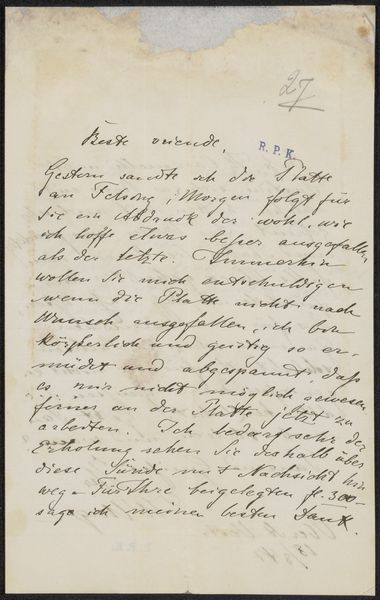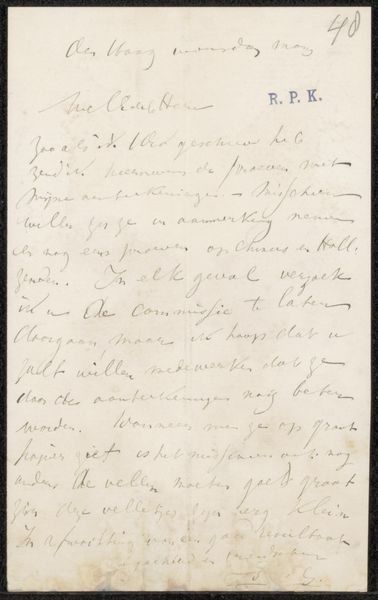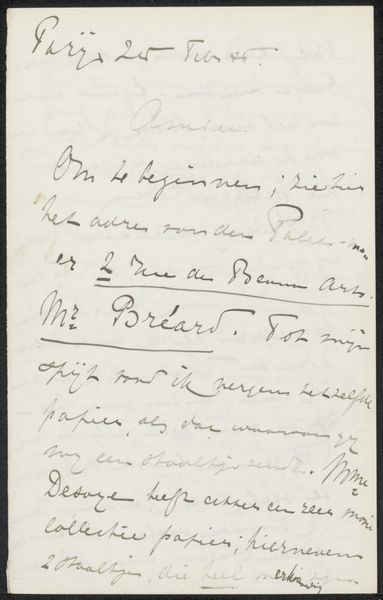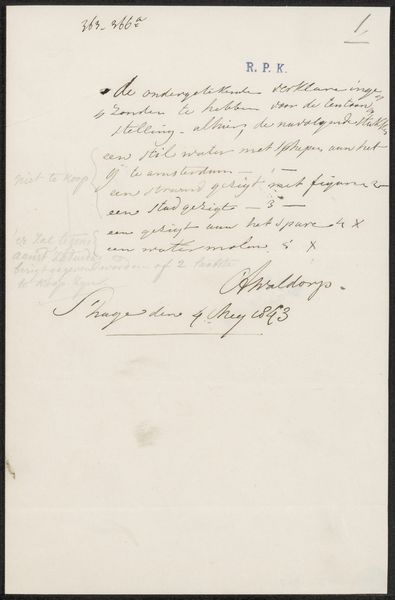
drawing, paper, ink, pen
#
portrait
#
drawing
#
hand written
#
script typography
#
hand-lettering
#
hand drawn type
#
hand lettering
#
paper
#
ink
#
hand-written
#
hand-drawn typeface
#
pen work
#
sketchbook drawing
#
pen
#
genre-painting
#
calligraphy
#
small lettering
Copyright: Rijks Museum: Open Domain
Curator: This work is titled "Brief aan Philip Zilcken," possibly created in 1908 by Baronne Madeleine Deslandes. It's a drawing on paper using ink and pen, showing a handwritten letter. What strikes you first? Editor: The intimacy. Seeing handwriting always feels like stepping into someone’s personal space. The slanted script gives it a nervous energy, like the writer is rushing to convey something important. Is this a common style of lettering from that period? Curator: Calligraphy was very refined at this time and was used as a decorative style of the moment, but the real subject is the role of letters in forging relationships, as communication technologies changed so fast with trains and other communication modes such as the telegraph. We can ask ourselves if handwritten messages can become objects of status. Editor: Interesting! Placing the letter within a larger historical context allows us to see the technology involved at the time and reflect on how women were involved in society through letters and correspondence. I suppose that back then, controlling information through these lines was really power! This isn't merely a sketch; it's a testament to Deslandes' engagement within a world changing faster. Curator: Exactly, it provides a small lens through which we view identity. Consider how much emphasis Deslandes puts in her signature here... What could the writing itself symbolize? Editor: I see that now. The fact it is an incomplete letter also makes it feel almost unfinished, a glimpse into a thought rather than the thought itself. It opens all sort of ways of seeing the relationships among privileged individuals back in those days. I am just fascinated about its intimate feel. Curator: I am struck by how a work about simple material things and language of its time may be read in many ways, with emphasis on power relations, feminist stances and new modes of communication. Editor: And for me, that blend of the everyday with personal feelings of longing for a very important letter. It invites us to contemplate the connections fostered within ink on paper as physical manifestations of society itself.
Comments
No comments
Be the first to comment and join the conversation on the ultimate creative platform.
